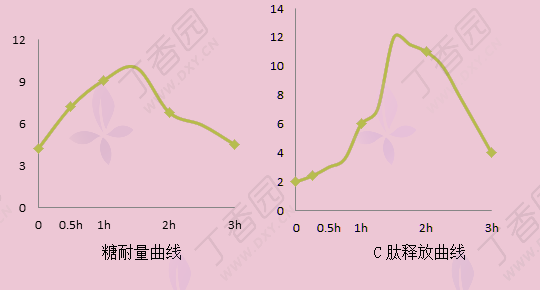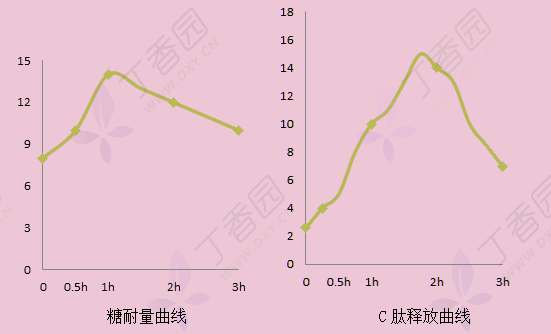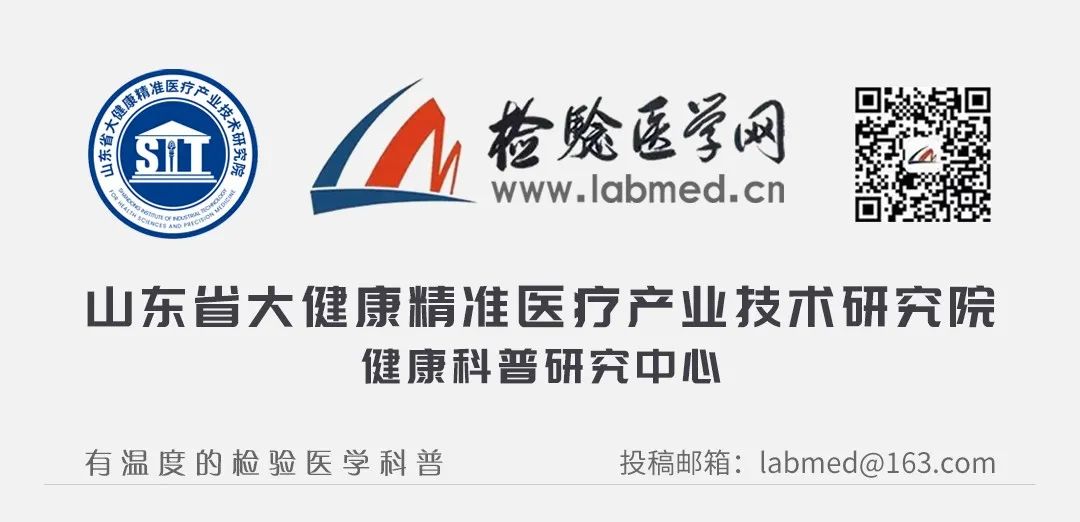
C-peptide is widely used in daily clinical diagnosis and treatment. So why do we need to test C-peptide? How is C-peptide tested? How do we interpret the results?
What is C-Peptide? Why Test for C-Peptide?
C-peptide, also known as connecting peptide, is a secretion product of pancreatic β-cells. It shares a common precursor with insulin—proinsulin. One molecule of proinsulin is cleaved by pancreatic proteases and carboxypeptidases into one molecule of insulin and one molecule of C-peptide.C-peptide and insulin are contained within the same granule and are ultimately secreted and released into the bloodstream in equimolar amounts. After entering the liver via the portal vein, a portion of insulin is taken up by the liver, and its quantity is variable; however, C-peptide is minimally taken up by the liver and is primarily excreted directly through the kidneys via urine, with a slower clearance rate. Additionally, compared to insulin, C-peptide has a longer half-life, resulting in unequal concentrations of the two in the blood.Testing C-peptide levels can provide a stable and comprehensive reflection of the insulin secretion function of pancreatic β-cells, and C-peptide does not exhibit cross-reactivity with insulin, thus overcoming interference from insulin receptors.For diabetic patients who are already using exogenous insulin or have developed insulin antibodies, measuring C-peptide levels in peripheral blood can more accurately and timely reflect endogenous insulin levels and better represent the function of pancreatic β-cells, guiding diabetes treatment.
What is the Use of C-Peptide Testing?
✦ Helps in clinical classification of diabetes and understanding the patient’s pancreatic function.✦ Because C-peptide is not affected by insulin antibodies, for patients receiving insulin therapy, C-peptide concentration can be directly measured to assess the function of the patient’s β-cells and evaluate the effectiveness of clinical insulin therapy.✦ Can differentiate the causes of hypoglycemia. For patients who frequently experience hypoglycemia, if C-peptide exceeds the normal range, it indicates excessive insulin secretion; if it is below normal, it suggests other causes.✦ Measuring C-peptide levels aids in diagnosing insulinomas and evaluating the effectiveness of related surgeries. If post-operative serum C-peptide levels remain high, it indicates residual insulin-producing tissue; if serum C-peptide levels continue to rise, it suggests a high possibility of tumor recurrence or metastasis.✦ According to the 2020 international expert consensus, in managing adult latent autoimmune diabetes (LADA), it is recommended to conduct individualized management based on C-peptide levels:
“C-peptide < 0.3 nmol/L” suggests treatment according to type 1 diabetes protocols, using insulin injection therapy.
“0.3 ≤ C-peptide ≤ 0.7 nmol/L” suggests treatment according to type 2 diabetes protocols, recommending oral hypoglycemic agents such as metformin, GLP-1RA or DPP-4i, TZD, and SGLT-2i; if HbA1c is not up to standard, insulin therapy should be initiated promptly.
“C-peptide > 0.7 nmol/L” suggests treatment according to type 2 diabetes protocols, considering the use of other oral hypoglycemic agents except for sulfonylureas, and recommends repeating C-peptide testing every 6 months or when blood glucose worsens, and re-evaluating the treatment plan; attention should be paid to distinguishing from type 2 diabetes patients with false positives for autoantibodies.
How is C-Peptide Tested Clinically?
C-peptide release test: The method is the same as that for glucose tolerance tests and insulin release tests.
✦ Discontinue medications that may affect the test.Medications that may influence the test, such as contraceptives, diuretics, or phenytoin, should be stopped 3 to 7 days prior to the test.✦ Control carbohydrate intake but do not overly restrict it.Patients should consume at least 150 g of carbohydrates daily for 3 days before the test, but should keep it within the range of 250 to 300 g while maintaining normal activity.✦ Do not overlook the details of sugar water preparation, consumption, and timing.The test should start between 7 and 9 AM, with the patient fasting for “8-10 hours” and orally taking 75 g of anhydrous glucose powder dissolved in 300 mL of warm water; if using 1 molecule of glucose, it would be 82.5 g. For children, the dosage is 1.75 g per kilogram of body weight, with a total not exceeding 75 g.The sugar water should be consumed within 3 to 5 minutes. Timing starts from the first sip of sugar, with blood samples taken from the forearm to measure blood glucose and C-peptide levels before and at 0.5 h, 1 h, 2 h, and 3 h after sugar consumption.✦ Maintain a calm and stable state during the experiment.During the test, subjects should not drink tea or coffee, smoke, or engage in vigorous exercise, but absolute bed rest is not required. Blood samples should be sent for testing as soon as possible.✦ Fasting fingertip blood glucose should be less than 10 mmol/L.The test generally requires that the subject’s fasting fingertip blood glucose be less than 10 mmol/L; if fasting blood glucose exceeds 10 mmol/L, it indicates the presence of hyperglycemic toxicity, and the data at this time cannot accurately reflect the subject’s pancreatic function. Furthermore, if fasting blood glucose is elevated, consuming sugar water may exacerbate hyperglycemia, causing unnecessary harm to the subject.
How to Analyze C-Peptide Release Test Results?
✦ C-peptide release curve for individuals with normal glucose metabolism: Fasting plasma C-peptide is 0.3 to 1.3 nmol/L, and after oral glucose intake, secretion peaks at 0.5 to 1.0 h, with peak values approximately 5 to 6 times the fasting value, gradually returning to fasting levels by 2 to 3 h.✦ Key points for analyzing C-peptide release tests include:
1. Analyze the values at each time point of the C-peptide release test in relation to the simultaneously measured blood glucose levels, checking for relative hyperinsulinemia and insulin resistance.
2. Analyze the timing of peak values in the C-peptide release test, checking for peak delays, which are characteristic of type 2 diabetes.
3. When the C-peptide release curve is flat, check for hyperglycemia’s toxic effects on β-cells, and assess whether there is severe β-cell failure, combining with insulin-related antibodies and disease duration to analyze whether it is type 1 or type 2 diabetes.
What are the Common Types of C-Peptide Release Curves?
1. All points in the glucose tolerance test are within normal ranges, but C-peptide levels are elevated, especially fasting C-peptide, indicating the presence of fasting insulin resistance, commonly seen in overweight and obese individuals. The main treatment plan is lifestyle management: appropriate dietary control, increased physical activity, and weight loss for the obese, without the need for hypoglycemic medications. Recheck the glucose tolerance test and C-peptide release test in about a year; if lifestyle management is effective, normal C-peptide secretion curves can be restored. Image source: Author’s illustration2. All points in the glucose tolerance test are within normal ranges, fasting C-peptide levels are elevated, indicating fasting insulin resistance, with peak values after sugar intake exceeding 5 times the fasting value, but with delayed peaks, which is an early manifestation of type 2 diabetes, indicating the patient is at high risk for pre-meal hypoglycemia.
Image source: Author’s illustration2. All points in the glucose tolerance test are within normal ranges, fasting C-peptide levels are elevated, indicating fasting insulin resistance, with peak values after sugar intake exceeding 5 times the fasting value, but with delayed peaks, which is an early manifestation of type 2 diabetes, indicating the patient is at high risk for pre-meal hypoglycemia. Image source: Author’s illustration3. The glucose tolerance test indicates impaired glucose regulation, fasting C-peptide levels are elevated, peak values occur at 0.5 to 1.0 h, exceeding 5 times the fasting value, and remain high at 3 h without returning to fasting levels.The main treatment plan is lifestyle management: appropriate dietary control, increased physical activity, and weight loss for the obese; hypoglycemic medications can include α-glucosidase inhibitors, and metformin can also be used for the obese.
Image source: Author’s illustration3. The glucose tolerance test indicates impaired glucose regulation, fasting C-peptide levels are elevated, peak values occur at 0.5 to 1.0 h, exceeding 5 times the fasting value, and remain high at 3 h without returning to fasting levels.The main treatment plan is lifestyle management: appropriate dietary control, increased physical activity, and weight loss for the obese; hypoglycemic medications can include α-glucosidase inhibitors, and metformin can also be used for the obese. Image source: Author’s illustration4. The glucose tolerance test indicates diabetes, fasting C-peptide levels can be normal, elevated, or decreased, with a slow rise in the release curve after sugar intake, delayed peaks, and at 3 h the release curve still does not return to fasting levels, which is characteristic of typical type 2 diabetes.As the duration of diabetes increases, the function of β-cells gradually declines, with fasting C-peptide levels decreasing, and the postprandial release curve rising more slowly, with more pronounced peak delays.
Image source: Author’s illustration4. The glucose tolerance test indicates diabetes, fasting C-peptide levels can be normal, elevated, or decreased, with a slow rise in the release curve after sugar intake, delayed peaks, and at 3 h the release curve still does not return to fasting levels, which is characteristic of typical type 2 diabetes.As the duration of diabetes increases, the function of β-cells gradually declines, with fasting C-peptide levels decreasing, and the postprandial release curve rising more slowly, with more pronounced peak delays. Image source: Author’s illustration5. Fasting C-peptide levels are low, and the release curve after sugar intake rises slowly, almost in a straight line, with no peak value. After excluding glucotoxicity, this indicates that the patient’s β-cell function is severely impaired, primarily due to insufficient insulin secretion, requiring long-term insulin replacement therapy.
Image source: Author’s illustration5. Fasting C-peptide levels are low, and the release curve after sugar intake rises slowly, almost in a straight line, with no peak value. After excluding glucotoxicity, this indicates that the patient’s β-cell function is severely impaired, primarily due to insufficient insulin secretion, requiring long-term insulin replacement therapy.
If the patient is a young person with ketosis, type 1 diabetes is highly likely;
If the patient is middle-aged or older with sudden onset, weight loss, rapid disease progression, and recurrent ketosis, consider adult latent autoimmune diabetes, confirmed by testing for related antibodies;
If the patient has a long history of diabetes and has been treated with adequate hypoglycemic medications with diminishing effects, consider β-cell function failure in type 2 diabetes patients.
 Image source: Author’s illustration
Image source: Author’s illustration
Conclusion
Correctly analyzing the C-peptide release curve in diabetic patients and assessing the function of β-cells is of significant guiding importance for diabetes classification and treatment.
Previous studies suggested that C-peptide has no biological activity and is only used to assess β-cell function; however, an increasing number of studies indicate that C-peptide can dilate blood vessels, improve red blood cell deformability, enhance insulin signaling system function, promote muscle utilization of glucose and amino acids, and increase Na+-K+-ATPase activity, playing an important role in glucose metabolism and the development of diabetic complications such as diabetic nephropathy, neuropathy, retinopathy, and cardiovascular diseases.
【References】
[1] Li Suyan. Clinical analysis of C-peptide release response curve types in type 2 diabetes [J]. Journal of Mathematical Medicine, 2018, 31(12): 1743-1745.[2] Raffaella Buzzetti, Tiinamaija Tuomi, Didac Mauricio, et al. Management of Latent Autoimmune Diabetes in Adults: A Consensus Statement From an International Expert Panel [J]. Diabetes. 2020.[3] Guo Fengqi, Wei Qianping. Research progress on the biological activity of C-peptide and its role in the treatment of diabetic complications [J]. Shandong Medical Journal, 2019, 59(14): 88-91.[4] Zhang Yuling, Chen Pei, Liu Jiaxiu, et al. Application research of C-peptide in assessing β-cell function [J]. Chinese Journal of Health Inspection, 2013, 23(11): 2492-2494.[5] Li Huan, Li Mo, Fu Xiying, et al. Clinical characteristics and diagnostic model validation of adult latent autoimmune diabetes [J]. Chinese Journal of Diabetes, 2020, 28(7): 517-520.[6] Fu Hanjing. How to analyze insulin release test results in diabetic patients [J]. Chinese Journal of General Practitioners, 2008, 7(6): 399-400.[7] Wang Yushui, Zhang Weihua. Clinical application of C-peptide release test in type 2 diabetes [J]. Immunoassay and Clinical Medicine, 2008, 15(2): 117-118.[8] Li Suwei. Reliability of C-peptide in assessing insulin resistance and β-cell secretion function [D]. Liaoning: China Medical University, 2006.
Source: Endocrine Time
Editor: Xiaoran Proofreader: Rose

